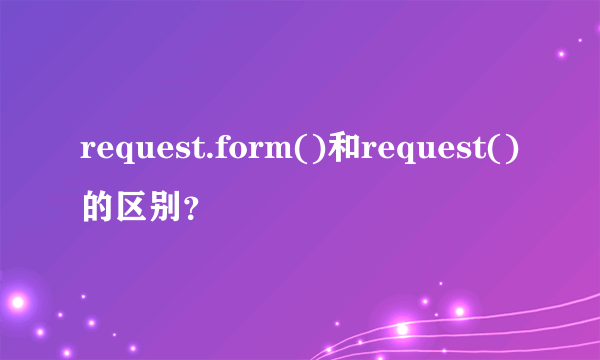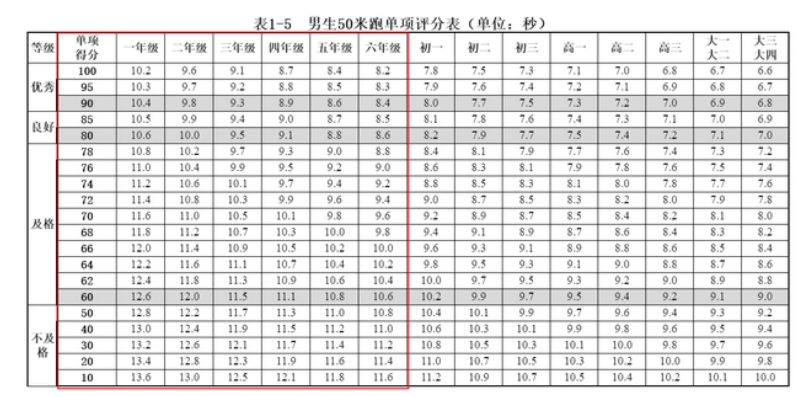
区别如下:
1、用法不同
Request.Form:获取以POST方式提交的数据(接收Form提交来的数据)
Request:包含以上两种方式(优先获取GET方式提交的数据),它会在QueryString、Form、ServerVariable中都搜寻一遍。
2、接收的方法不同
Request.form方法,它是用来接收表单变量的(post 方法)
Request对象也可以不指明具体使用QueryString或是form方法,如果包含以上两种方式(优先获取GET方式提交的数据),它会在 QueryString、Form、ServerVariable中都搜寻一遍。
3、传递数据量不同
Request.form方法能接收的数据没有限制。
Reques的对象为trequest.QueryString时只能接收数据量小于2KB数据。
4、执行速度不同
Request.form方法的执行速度取决于接收数据量的大小,如果数据较多执行速度比较慢。
Reques执行速度要比Request.form方法快。一般往数据库请求查询时用 request.QueryString方法来提高查询的速度。
参考资料来源:
区别:
1、Request.Form:获取以POST方式提交的数据(接收Form提交来的数据);Request.QueryString:获取地址栏参数(以GET方式提交的数据)
Request:包含以上两种方式(优先获取GET方式提交的数据),它会在QueryString、Form、ServerVariable中都搜寻一遍。而且有时候也会得到不同的结果。
如果你仅仅是需要Form中的一个数据,但是你使用了Request而不是Request.Form,那么程序将在QueryString、ServerVariable中也搜寻一遍。如果正好你的QueryString或者ServerVariable里面也有同名的项,你得到的就不是你原本想要的值了。
2、两者除了接收方法不同外,还有传递数据量大小的问题,request.form方法能接收的数据没有限制,而 request.QueryString只能接收数据量小于2KB数据,当然后者的执行速度要比前者快。
一般往数据库请求查询时用 request.QueryString方法,因为查询时只不过那么几个关键词,没有必要用request.form方法而导致查询速度变慢。
3、request.QueryString方法还会把数据信息显示在客户端浏览器地址栏中,安全性较差;request.form方法不存在上述问 题,因此大量被应用在多个文本域提交数据和用户登陆的场合。
参考资料:
Request.Form:获取以POST方式提交的数据(接收Form提交来的数据);
Request.QueryString:获取地址栏参数(以GET方式提交的数据)
Request:包含以上两种方式(优先获取GET方式提交的数据),它会在QueryString、Form、ServerVariable中都搜寻一遍。
而且有时候也会得到不同的结果。如果你仅仅是需要Form中的一个数据,但是你使用了Request而不是Request.Form,那么程序将在QueryString、ServerVariable中也搜寻一遍。如果正好你的QueryString或者ServerVariable里面也有同名的项,你得到的就不是你原本想要的值了。
Request.ServerVariables中的各种参数
Request.ServerVariables("Url")
返回服务器地址
Request.ServerVariables("Path_Info")
客户端提供的路径信息
Request.ServerVariables("Appl_Physical_Path")
与应用程序元数据库路径相应的物理路径
Request.ServerVariables("Path_Translated")
通过由虚拟至物理的映射后得到的路径
Request.ServerVariables("Script_Name")
执行脚本的名称
Request.ServerVariables("Query_String")
查询字符串内容
Request.ServerVariables("Http_Referer")
请求的字符串内容
Request.ServerVariables("Server_Port")
接受请求的服务器端口号
Request.ServerVariables("Remote_Addr")
发出请求的远程主机的IP地址
Request.ServerVariables("Remote_Host")
发出请求的远程主机名称
Request.ServerVariables("Local_Addr")
返回接受请求的服务器地址
Request.ServerVariables("Http_Host")
返回服务器地址
Request.ServerVariables("Server_Name")
服务器的主机名、DNS地址或IP地址
Request.ServerVariables("Request_Method")
提出请求的方法比如GET、HEAD、POST等等
Request.ServerVariables("Server_Port_Secure")
如果接受请求的服务器端口为安全端口时,则为1,否则为0
Request.ServerVariables("Server_Protocol")
服务器使用的协议的名称和版本
Request.ServerVariables("Server_Software")
应答请求并运行网关的服务器软件的名称和版本
Request.ServerVariables("All_Http")
客户端发送的所有HTTP标头,前缀HTTP_
Request.ServerVariables("All_Raw")
客户端发送的所有HTTP标头,其结果和客户端发送时一样,没有前缀HTTP_
Request.ServerVariables("Appl_MD_Path")
应用程序的元数据库路径
Request.ServerVariables("Content_Length")
客户端发出内容的长度
Request.ServerVariables("Https")
如果请求穿过安全通道(SSL),则返回ON如果请求来自非安全通道,则返回OFF
Request.ServerVariables("Instance_ID")
IIS实例的ID号
Request.ServerVariables("Instance_Meta_Path")
响应请求的IIS实例的元数据库路径
Request.ServerVariables("Http_Accept_Encoding")
返回内容如:gzip,deflate
Request.ServerVariables("Http_Accept_Language")
返回内容如:en-us
Request.ServerVariables("Http_Connection")
返回内容:Keep-Alive
Request.ServerVariables("Http_Cookie")
返回内容如:nVisiT%
2DYum=125;ASPSESSIONIDCARTQTRA=FDOBFFABJGOECBBKHKGPFIJI;ASPSESSIONIDCAQQTSRB=LKJJPLABABILLPCOGJGAMKAM;ASPSESSIONIDACRRSSRA=DK
HHHFBBJOJCCONPPHLKGHPB
Request.ServerVariables("Http_User_Agent")
返回内容:Mozilla/4.0(compatible;MSIE6.0;WindowsNT5.1;SV1)
Request.ServerVariables("Https_Keysize")
安全套接字层连接关键字的位数,如128
Request.ServerVariables("Https_Secretkeysize")
服务器验证私人关键字的位数如1024
Request.ServerVariables("Https_Server_Issuer")
服务器证书的发行者字段
Request.ServerVariables("Https_Server_Subject")
服务器证书的主题字段
Request.ServerVariables("Auth_Password")
当使用基本验证模式时,客户在密码对话框中输入的密码
Request.ServerVariables("Auth_Type")
是用户访问受保护的脚本时,服务器用於检验用户的验证方法
Request.ServerVariables("Auth_User")
代证的用户名
Request.ServerVariables("Cert_Cookie")
唯一的客户证书ID号
Request.ServerVariables("Cert_Flag")
客户证书标志,如有客户端证书,则bit0为0如果客户端证书验证无效,bit1被设置为1
Request.ServerVariables("Cert_Issuer")
用户证书中的发行者字段
Request.ServerVariables("Cert_Keysize")
安全套接字层连接关键字的位数,如128
Request.ServerVariables("Cert_Secretkeysize")
服务器验证私人关键字的位数如1024
Request.ServerVariables("Cert_Serialnumber")
客户证书的序列号字段
Request.ServerVariables("Cert_Server_Issuer")
服务器证书的发行者字段
Request.ServerVariables("Cert_Server_Subject")
服务器证书的主题字段
Request.ServerVariables("Cert_Subject")
客户端证书的主题字段
Request.ServerVariables("Content_Type")
客户发送的form内容或HTTPPUT的数据类型
说白了,request()是种简写,它可以获取POST方式提交的数据,也能获取GET方式提交的数据,功能上比request.query()强大。request.query()只能用来获取通过GET方式提交的数据。
楼上说的都对,可以这样理解(我个人的理解方式),简单区别,灵活运用的话。在页面间传值,即值由一个页面传到另一个页面,在另一个页面可以用request()来接收值。在页内传值,即表单值提交给自身页面,在自身页面脚本里面可以用request.form() 来接收值
标签:request















